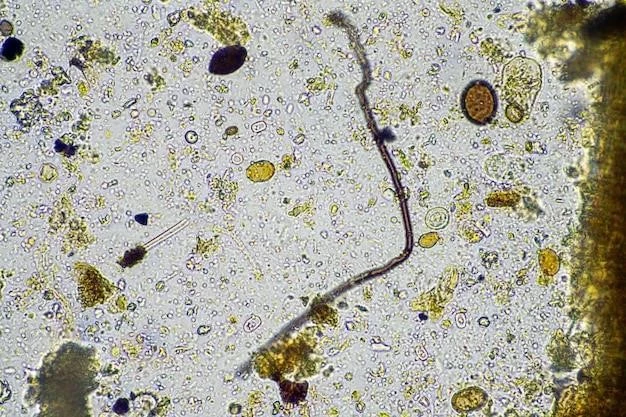Introduction to Pinta Disease
Pinta is a relatively benign skin disease caused by the bacteria Treponema carateum, primarily affecting rural areas of Central and South America. It manifests as dry, scaly lesions and colored patches, with distinctive phases of skin discoloration and rash progression.
Pinta, a relatively benign skin disease, primarily affects rural areas of Central and South America. It presents as dry, scaly lesions and colored patches known as pintides. The disease is caused by the bacterium Treponema carateum and progresses through distinct phases of skin discoloration and rash development.
Pinta, also referred to as puru-puru or carate, is a mild and non-progressive condition caused by Treponema carateum bacteria. Unlike syphilis or yaws, pinta is limited to affecting the skin and is typically found in rural regions of Central and South America.
This skin disease, transmitted through direct nonsexual contact, manifests as pimple-like bumps that evolve into small reddish patches, changing in color before leading to depigmentation. Pinta is characterized by skin lesions that persist for years if left untreated.
Analogous to syphilis, the physical symptoms of pinta vary based on the disease stage, with primary pinta showing scaly plaques and secondary pinta presenting generalized papulosquamous lesions.
Pinta is a benign skin disease caused by the bacterium Treponema carateum, primarily affecting Central and South America. The disease presents as dry, scaly lesions and colored patches known as pintides, progressing through distinctive stages of skin discoloration and rash development.
Cause of Pinta
Pinta, a condition primarily found in Central and South America, is caused by the bacteria Treponema carateum. This mild skin disease leads to the formation of dry, scaly lesions and colored patches. The infection progresses through various stages, including distinctive changes in skin discoloration and the development of pintides.
Symptoms of Pinta
Pinta presents a series of symptoms that manifest primarily as dry, scaly papular lesions, which eventually develop into abnormally colored patches known as pintides. These patches may vary in color, including white where pigment cells are destroyed, or in shades of blue, red, or pink. The disease predominantly affects the skin, progressing through stages of lesion development over several years if left untreated. The lesions can vary in size and appearance, with initial pimple-like bumps changing and evolving into distinct manifestations characteristic of pinta.
Overview of Pinta
Pinta is a relatively benign skin disease caused by the bacterium Treponema carateum, primarily affecting Central and South America. It manifests as dry, scaly lesions and colored patches known as pintides, progressing through distinctive stages of skin discoloration and rash development.
Diagnostic Methods for Pinta
Pinta is typically diagnosed based on clinical presentation, with distinct skin lesions and discoloration patterns. Serological tests, including nontreponemal and treponemal tests, are commonly used in laboratory settings to confirm the presence of Treponema carateum bacteria. Darkfield examination of exudates from early lesions can also provide direct evidence of the bacteria. Overall, a combination of clinical evaluation and laboratory testing is crucial in diagnosing pinta accurately.

Laboratory Testing for Pinta
Pinta is commonly diagnosed based on clinical presentation, but serological tests such as nontreponemal and treponemal tests play a crucial role in confirming the presence of Treponema carateum. Additionally, darkfield examination of exudates from early lesions can provide direct evidence of the bacteria. A combination of clinical evaluation and laboratory testing is essential for an accurate diagnosis.
Introduction to Pinta Treatment
Treatment for Pinta typically involves antibiotics to eliminate the Treponema carateum bacteria causing the infection. It is crucial to follow the prescribed medication regimen to ensure complete recovery and prevent complications.
Medical Interventions for Pinta
Medical interventions for Pinta typically involve the administration of antibiotics to target and eliminate the Treponema carateum bacteria responsible for the infection. It is essential to adhere to the prescribed antibiotic regimen to ensure the effective eradication of the bacteria and the resolution of skin lesions associated with Pinta. Additionally, monitoring of the patient’s progress and follow-up care may be necessary to confirm the successful treatment of the disease.
Preventive Measures for Pinta
Preventive measures for Pinta primarily revolve around avoiding direct skin-to-skin contact with individuals infected with Treponema carateum. Maintaining good personal hygiene practices, such as regular handwashing, can help prevent the transmission of the bacteria. Additionally, raising awareness about the disease in endemic regions and promoting early diagnosis and treatment can contribute to reducing the incidence of Pinta.
Pinta is primarily found in scattered rural areas of Central and South America. The disease is endemic to regions where direct nonsexual contact facilitates its transmission. As an ancient skin disease, pinta has historical roots in the Aztec and Carib Amerindian populations of the 16th century.
Global Distribution of Pinta
Pinta is a skin disease predominantly found in scattered rural regions of Central and South America. The infection is typically transmitted through direct nonsexual contact, with historical roots traced back to the Aztec and Carib Amerindian populations from the 16th century. While the disease is relatively benign and limited to affecting the skin, it remains endemic in specific areas where the Treponema carateum bacteria thrive.
Populations at Risk for Pinta
Populations residing in scattered rural areas of Central and South America are at risk for Pinta due to the endemic nature of the disease in these regions. Individuals engaging in direct nonsexual contact with infected individuals are particularly susceptible to contracting the Treponema carateum bacteria, leading to the development of skin lesions and discoloration associated with Pinta. Awareness and preventive measures are vital for at-risk populations to reduce the transmission and prevalence of the disease.

Complications and Prognosis of Pinta
Pinta, a tropical skin disease, can lead to chronic skin lesions and discoloration if left untreated. The disease primarily affects the skin and can cause long-lasting skin changes, but it does not typically result in severe health complications. Prognosis is generally good with timely and appropriate treatment, leading to the resolution of skin symptoms.
Possible Complications of Pinta
Pinta, being primarily a skin disease, may lead to chronic skin lesions and discoloration if left untreated for an extended period. While the disease itself typically does not result in severe health complications, the persistence of skin abnormalities can impact an individual’s quality of life. Timely and appropriate treatment is crucial in preventing long-term skin changes associated with Pinta and ensuring a favorable prognosis for affected individuals.
Prognosis for Patients with Pinta
Patients diagnosed with Pinta have a favorable prognosis when promptly treated with antibiotics to eradicate the Treponema carateum bacteria; With appropriate medical interventions, patients can expect the resolution of skin lesions and discoloration associated with Pinta. Timely and effective treatment plays a crucial role in achieving a successful outcome and preventing complications associated with the disease.
